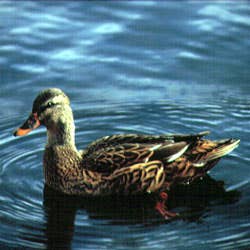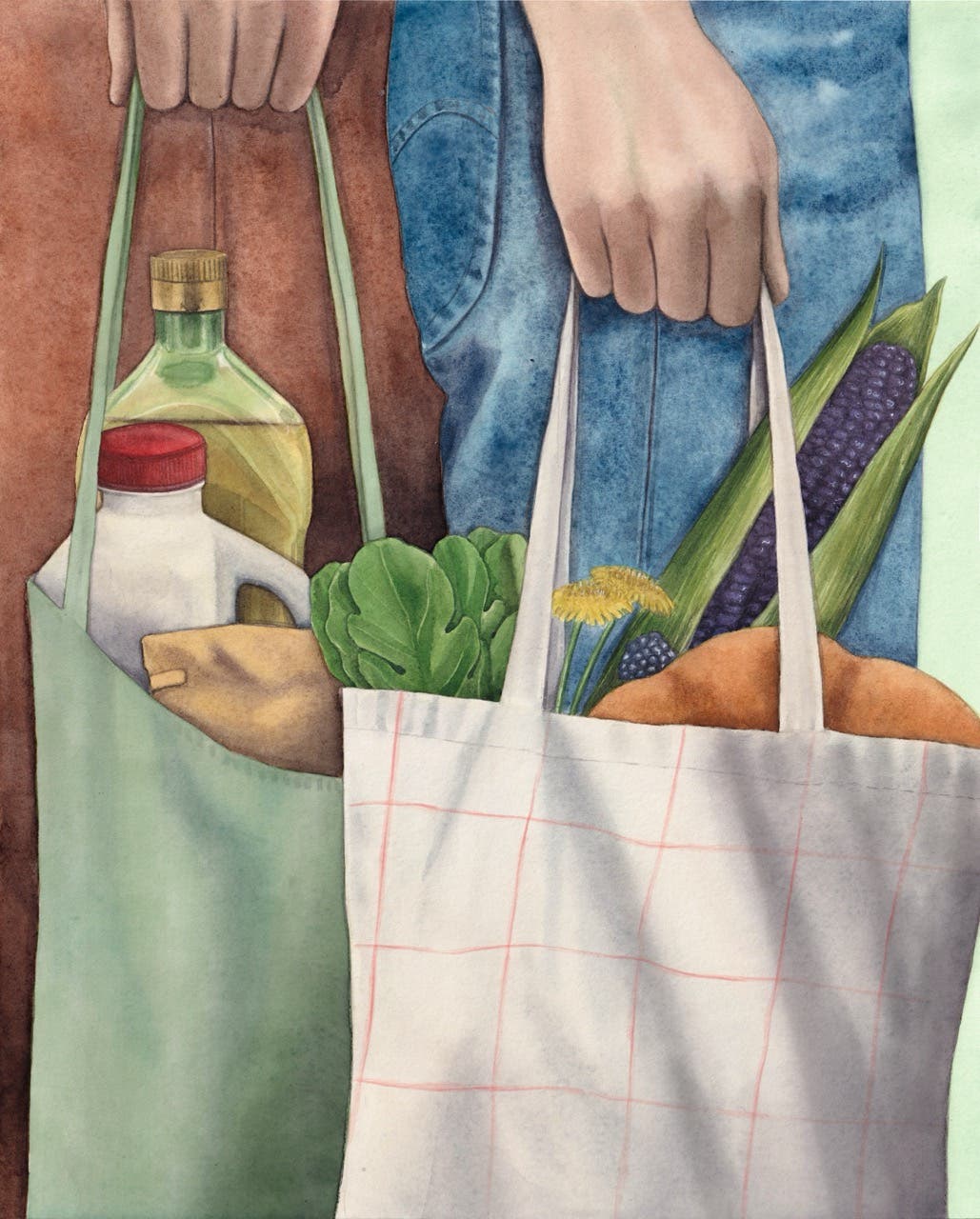
Ed and I began to hunt together more than 20 years ago—probably before we were technically married—for ruffed grouse, woodcock, and black ducks. Now, those three birds don't look alike, or even come from the same family, but they do have something in common: Once you know how to cook them, they become spectacular food—each with a flavor very much its own, unmistakably wild and exquisite.
I didn't know how to cook them at first, I must admit. Confronted, in those early days, with a plethora of just-shot wild birds, I searched my cookbooks for recipes. The classics—Craig Claiborne and Julia Child—gave me suggestions for the fat, domesticated "puddle ducks" available in markets, but those specimens bear no resemblance to the lean, migratory, wild kind we were shooting; and my culinary gurus appeared never to have heard of grouse or woodcock. The sporting periodicals weren't much help either—too much salty canned soup used as sauce for overcooked gray meat.
But Ed and I had a magazine of our own by that time, Gray's Sporting Journal, and we happened to publish an article by E. A. (Annie) Proulx (who has since become a well-known novelist) and a former New York Times reporter named Lew Nichols called "The Curious, the Bizarre, the Delectable, and the Impossible: A Sampling of Gamebird Recipes Through the Ages". The piece was much more than recipes: It was history and legend and lore, written in resplendent prose, describing everything from lavish Roman banquets serving peacocks and figpeckers to the experience of drinking rioja in a tiny bar on a side street in Barcelona while feasting on deep-fried sparrows.
Inspired by the article, I sought out classics of a different kind, reading Brillat-Savarin, Escoffier, and M. F. K. Fisher on the subject of cooking and eating wild birds. (Brillat-Savarin's definition of game is classic: "By game," he writes, "we mean those animals which live in the woods and fields in a state of natural freedom, and which are still good to eat.")
With new enthusiasm and insight, I began to cook the birds we shot, and little by little they revealed themselves to me. I realized that the superior flavor of ruffed grouse comes from its fragile, subtle white meat, often delicately laced with the faint essence of the wild grapes or apples the birds had fed on; that black ducks are strong but sweet, and best cooked so that their skin becomes a crispy counterpoint to their tender, full-bodied meat; that woodcock is unique, possessing the most remarkable flavor of any game bird with its rich, dark meat—intense but not overpowering. But I learned a more important lesson from my new mentors, too: I came to appreciate as never before the beauty of wild food—the way in which hunting, perhaps more than any other form of procuring food, connects us and involves us with what we eat.
Ed and I used to live on an island in the salt marshes of Ipswich, on the northern Massachusetts coast, and we went duck hunting there nearly every day during the season; for the other birds, we traveled north to New Hampshire. Today, we live in New Hampshire, and travel further north—to New Brunswick—to hunt, nearly always making our trips with a regular group of friends.
In New Brunswick one year, with an ever-expanding number of participants on the trip, we must have seemed like a caravan of nomads as we moved from place to place in pursuit of our prey with our dogs and guns and hunting guides. Our path led us from Sackville, near the Nova Scotia border, into the center of the province and then up onto the Acadian Peninsula. Each day became a blur of sleeping, eating, hunting, and traveling, laced liberally throughout with fellowship and laughter.
At one point in his marvelous book about woodcock, Making Game (Clark City Press, 1990), Guy de la Valdene writes about the sense of immersion that all hunters feel at one time or another. "I wish I could take a picture that would tell it all," he writes. "[B]ut … [t]he boreal forests of fall are impossible to duplicate except in one's soul." The hunter becomes so intent on remaining immersed that time and climate cease to have relevance. The car's only purpose is for seeking out or getting to fresh cover. Maps help determine where the birds are, not where the hunter is. Hunting develops a wonderful seamlessness that enhances the hunter's focus and magnifies every twitch in the experience.
We start out by hunting black ducks, motoring before dawn to an island in the St. John River, dragging our gear and our wader-covered bodies through the muck to sit in a wood-floored, grass-walled blind. As our host and guide lies nearby in the grass with his toller (a breed of dog that lures ducks into gunning range), we peer out at the marsh and wait. It's cold, but not as cold as some duck mornings. Through the darkness, we can hear the whistle of wings—geese, black ducks, or blue-winged teal, we know. Half an hour before sunrise, when it becomes legal to shoot, we begin to swivel our heads, looking this way and that. For long periods, we stretch our sights over the water, towards the horizon, then look to the sky in search of ducks. Finally, the ducks come; first you see them far away, and then at last they circle, eyeing the decoys, before setting their wings to begin to splash down. At that moment, we stand and shoot. At almost the same instant, the toller leaps into the water to retrieve the great prize.
Later, driving along roads that alternate between dirt and paved, we look for damp woodlands of alder trees. Coming upon what seems like a good spot, we pull off the road, discuss our approach, and release our pointing dog, Bud. We have traded our waders for canvas chaps, and we wear sturdy walking boots, orange shooting vests and hats, gloves, and protective glasses. I walk along the edge of the alders in the field; Ed is inside, bushwhacking through the woodlands with Bud. Then a moment crystallizes: The dog points. A woodcock flies, shots are fired, and as the bird tumbles to earth, you and the dog mark the spot. You praise the dog for bringing the bird, for finding the bird. Back at the car, you give him water. He curls up on the back seat and sleeps. The whole experience seems so calm, so intense.
It was the sportsman and writer Charley Waterman who first proposed that there were three types of hunting outdoorsmen—shooters, hunters, and dog men. There is a certain amount of shooter in those of us who love to eat wild birds; after all, it is the successful shooter who affords the hunting party a feast. Woodcock and grouse, in particular, are attractive to the hunters—because you have to travel long and hard and know a lot about these birds' habits in order to find them. Dogs are essential to nearly all bird hunting—but dog men, among whom Ed and I count ourselves, like being out with their dogs almost more than the actual finding and shooting of wild birds. Anyway, it's really the dogs who do the hunting. Dog men just watch them do their magnificent job.
We meet our friends in a motel room on the Acadian Peninsula, and end our day drinking Absolut cocktails from bathroom glasses and then, as a kind of experiment, leaving all the dogs in the same room while we go to dinner at the motel restaurant. All our expectations are met. The dogs fight in our absence, and the local Acadian⁄French genes deliver an incredible meal of fresh mussels and striped bass along with a superb local white wine. Because we are in the midst of our hunting "immersion", and also out of sheer exhaustion, we end up eating the same meal every night of our stay. Until the last night, when we move to a nearby inn.
There, the tradition of our hunt brings us all together—shooters, hunters, and dog men—for a final, wonderful evening of eating game birds together. We wait until the last guest has been served in the dining room, and then invade the kitchen en masse to prepare our feast. As the designated head chef, I cook the woodcock, sauteing the sliced breasts quickly in olive oil and then covering them with a reduction of thyme-scented cream. We eat these standing up as we cook, sipping cocktails and talking about the hunt. Charles grills the ducks. Alex makes his famous sauce of beach plum jelly, wine, and butter. Hugh, C. V., and Ed breast more woodcock (to be served this time on toast points). Dan and Kris prepare the grouse for roasting. Peter refills our cocktail glasses, and P. J. tells us stories and makes us laugh. One at a time as the cooking continues, we slip out to quickly shower and change clothes. When, at last, we serve ourselves, sitting down in the dining room, we are all dressed for dinner—not quite in black tie or diamonds, but properly and with respect, for this will most probably be our best meal of the year.
Keep Reading
Continue to Next Story










